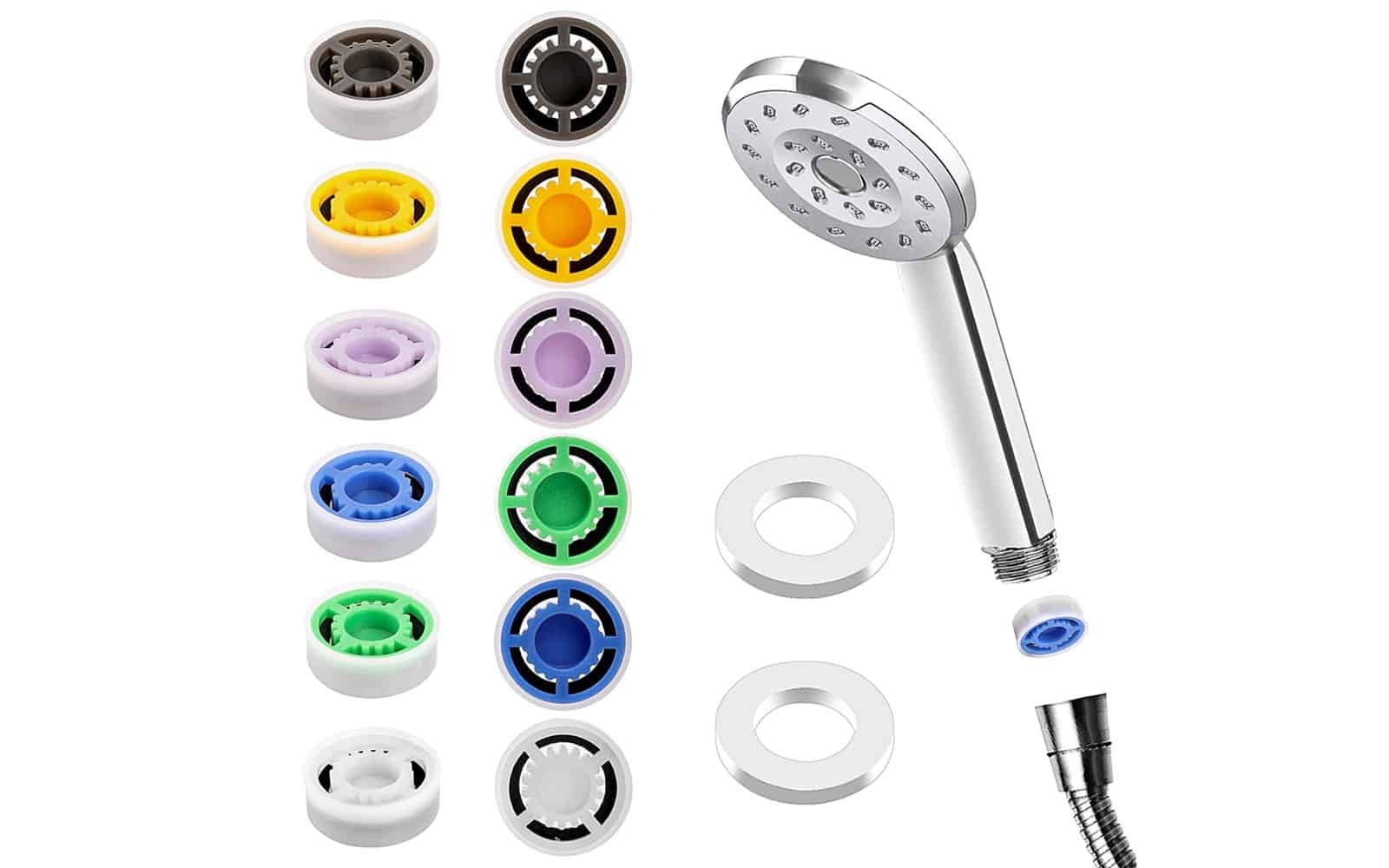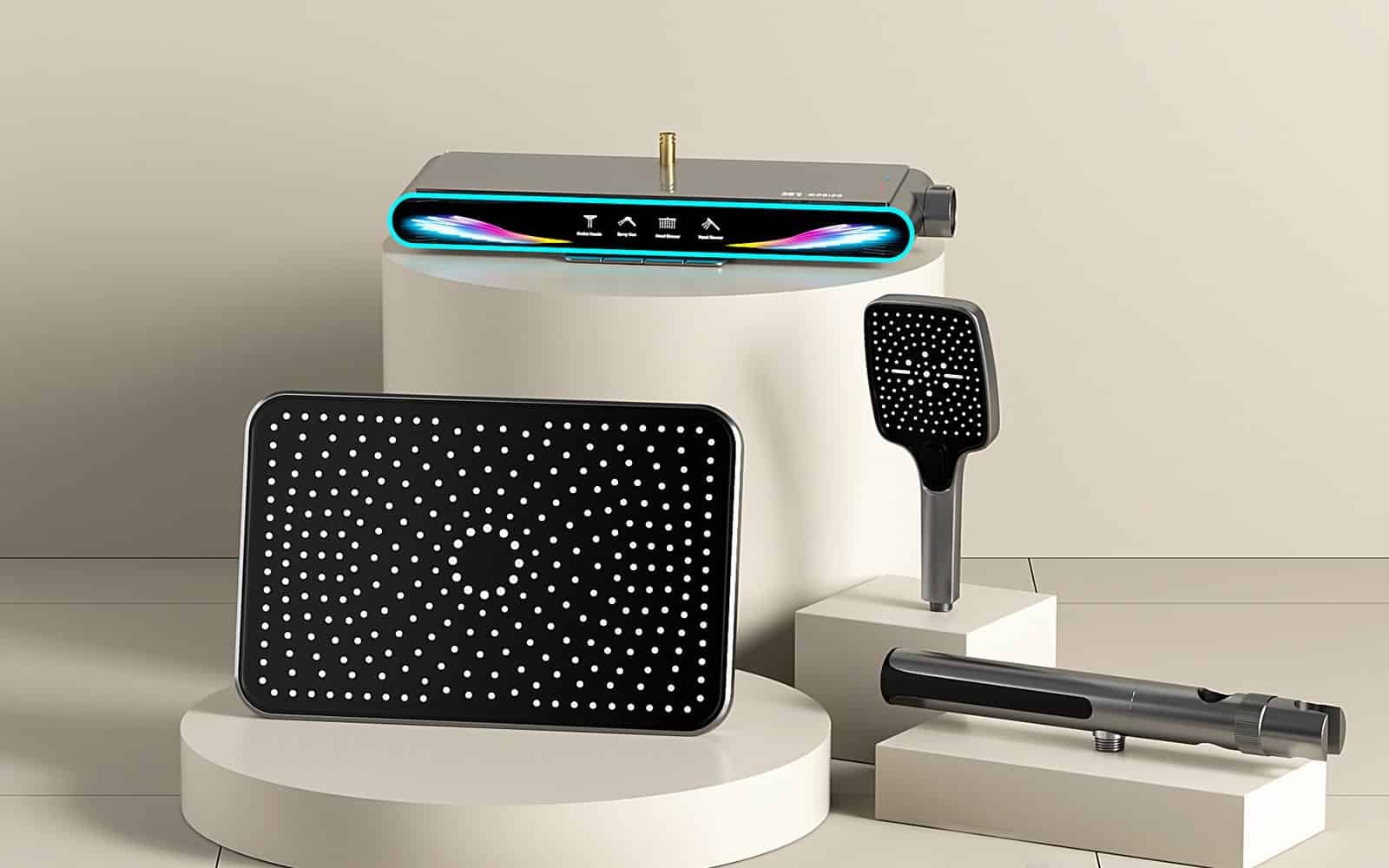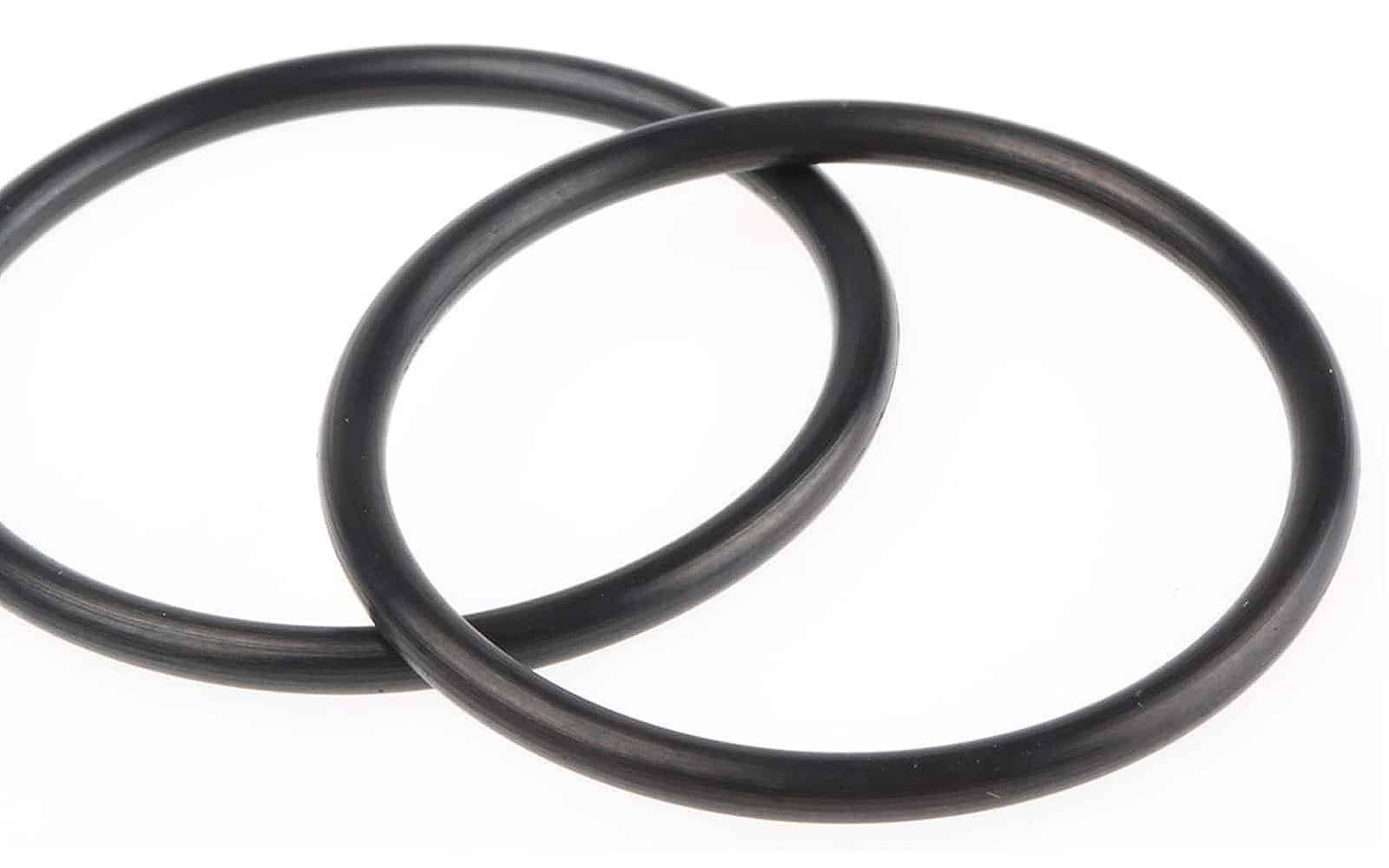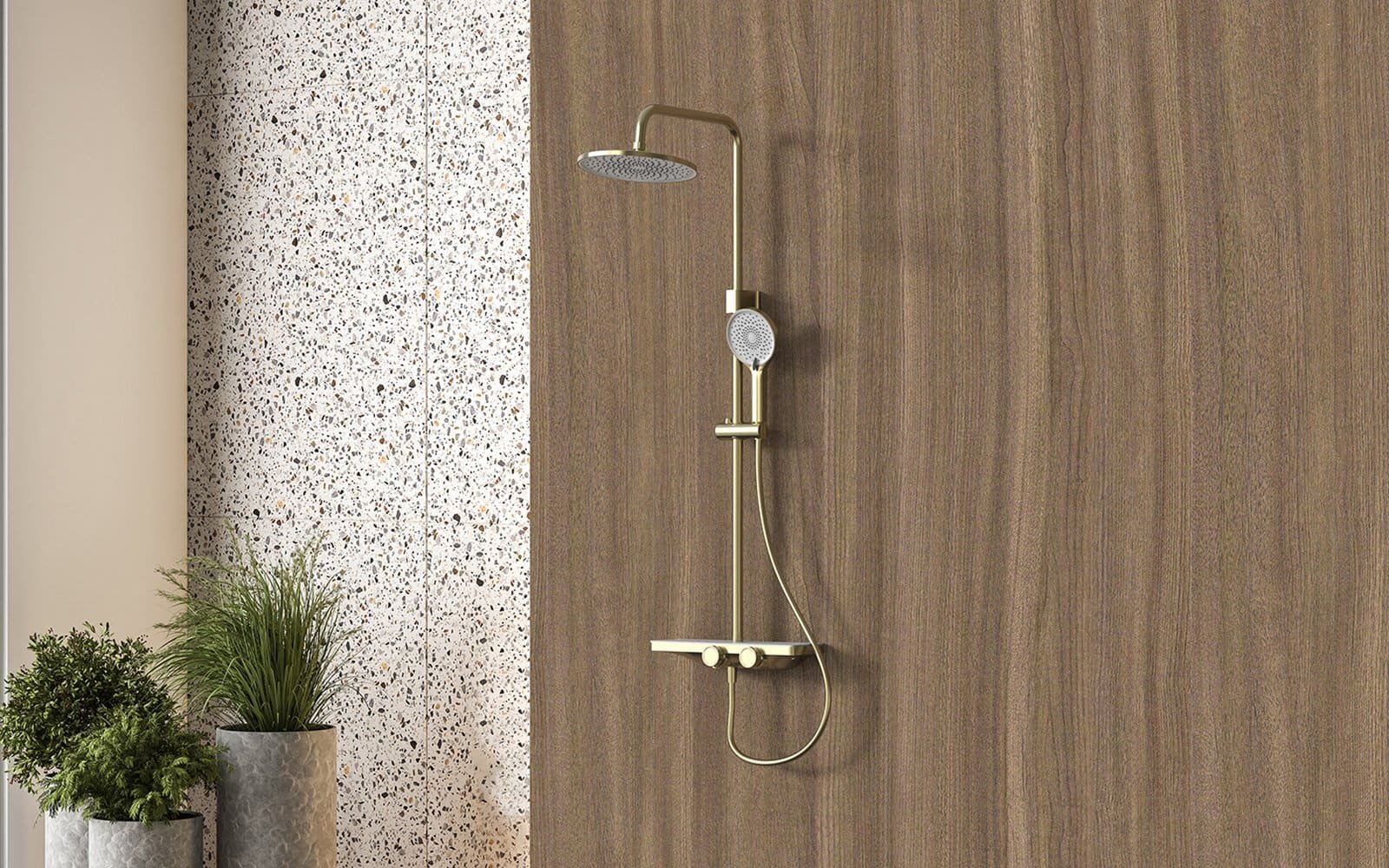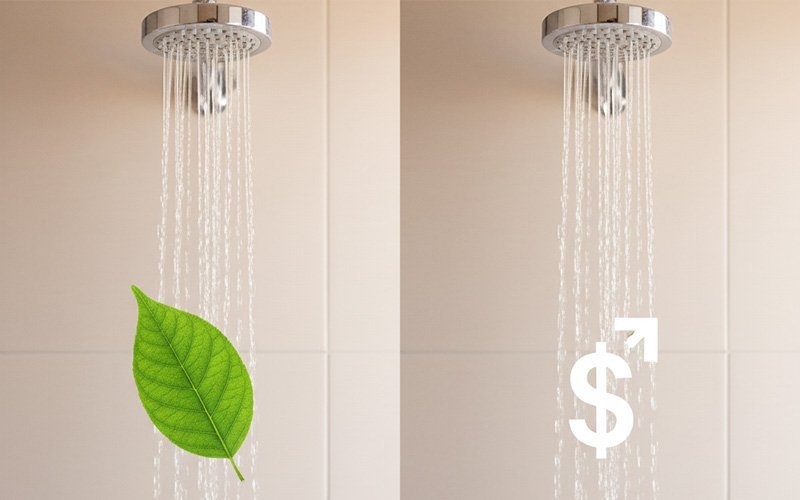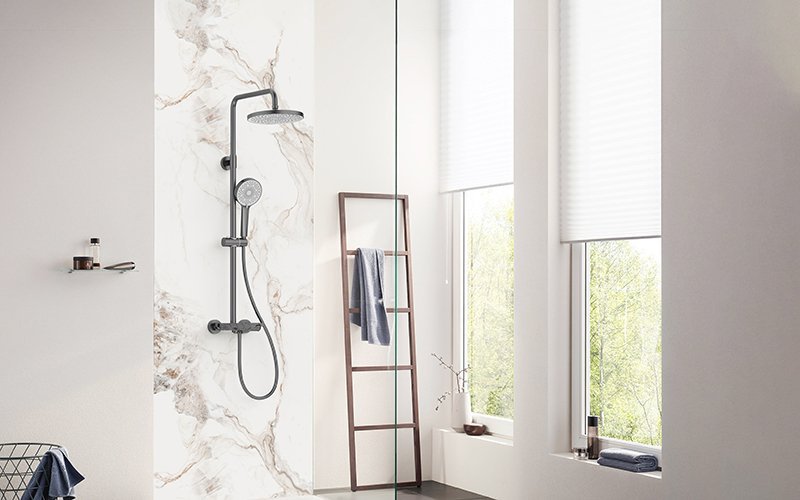Table of Content
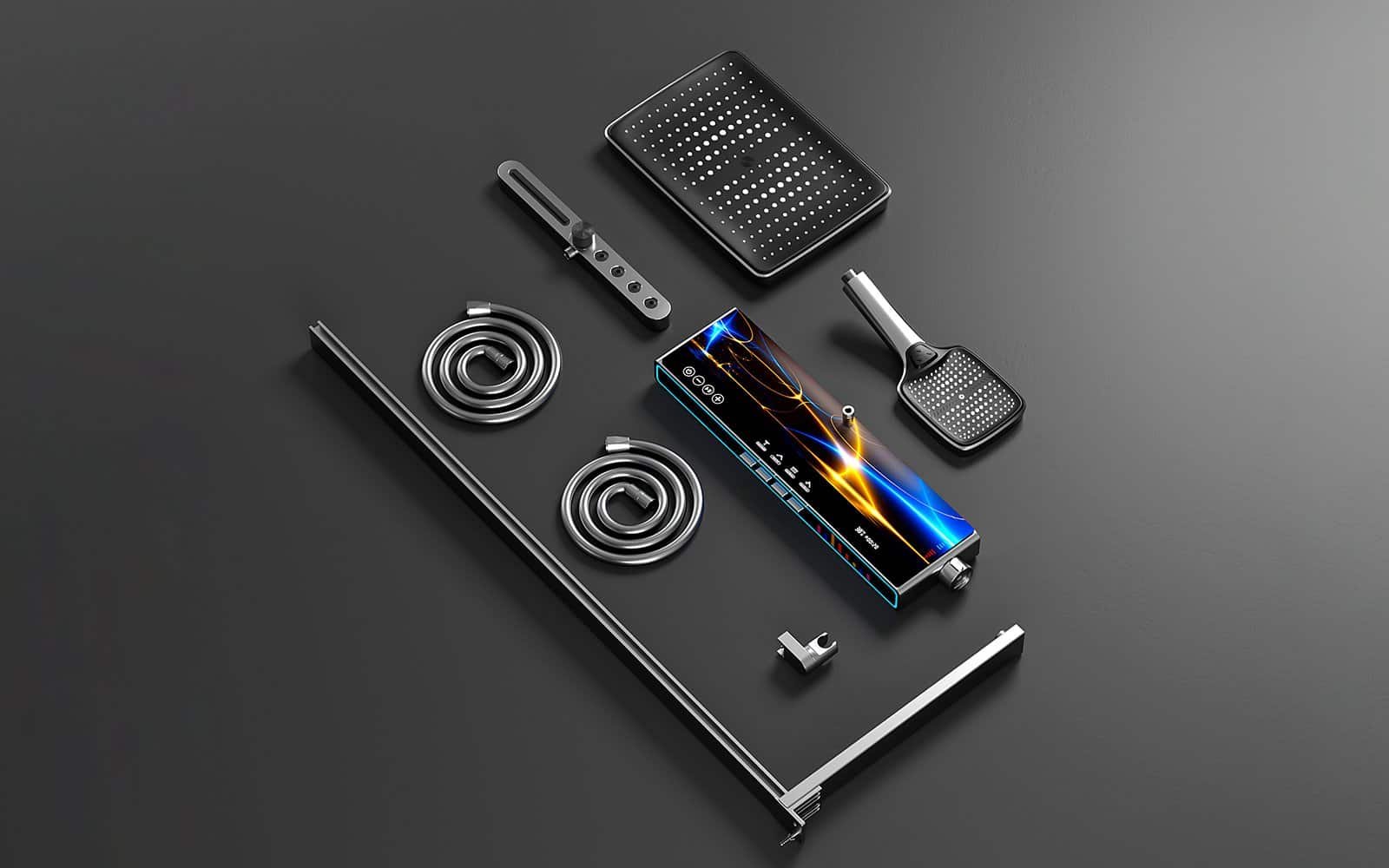
Disclaimer:
This guide is for general informational purposes only and provides a simplified overview of common shower faucet components. It does not constitute professional plumbing advice. Features and components can vary significantly by brand and model.
For any specific repairs, installations, or purchasing decisions, we strongly recommend consulting a licensed professional plumber and your product’s official manual.
Shower faucets are intricate systems responsible for balancing water flow, temperature, and pressure in your bathroom. This guide explores each major component of a shower faucet, detailing its function, types, and significance. Designed to be informative and practical, this article aims to help you understand, maintain, or upgrade your shower system.
| Component | Function | Materials | Significance |
|---|---|---|---|
| Controls | Adjust water flow, temperature, or divert water | Metal, Plastic | Enhances user experience |
| Cartridge/Valve | Regulates water flow and mixing | Ceramic, Metal | Key for stability and temperature control |
| Diverter | Redirects water to different outlets | Metal, Plastic | Provides versatility |
| Flow Restrictor | Limits flow to save water | Plastic, Metal | Can contribute to reducing water consumption |
| Escutcheon Plate | Covers wall opening, and helps create a water-resistant seal | Metal, Plastic | Improves aesthetics and waterproofing |
| Showerhead | Delivers water in various patterns | Brass, Stainless Steel, Plastic | Defines shower experience |
| Shower Arm & Piping | Connects showerhead, delivers water | Brass, Copper, PEX | Ensures positioning and flow |
| Aerator | Mixes air with water to save usage | Plastic, Metal | Improves comfort and efficiency |
| O-Rings & Washers | Seals connections to prevent leaks | Rubber, Silicone | Essential for maintaining seals |
| Mounting Hardware | Secures faucet components | Metal | Provides stability |
Controls (Handles, Knobs, Buttons)
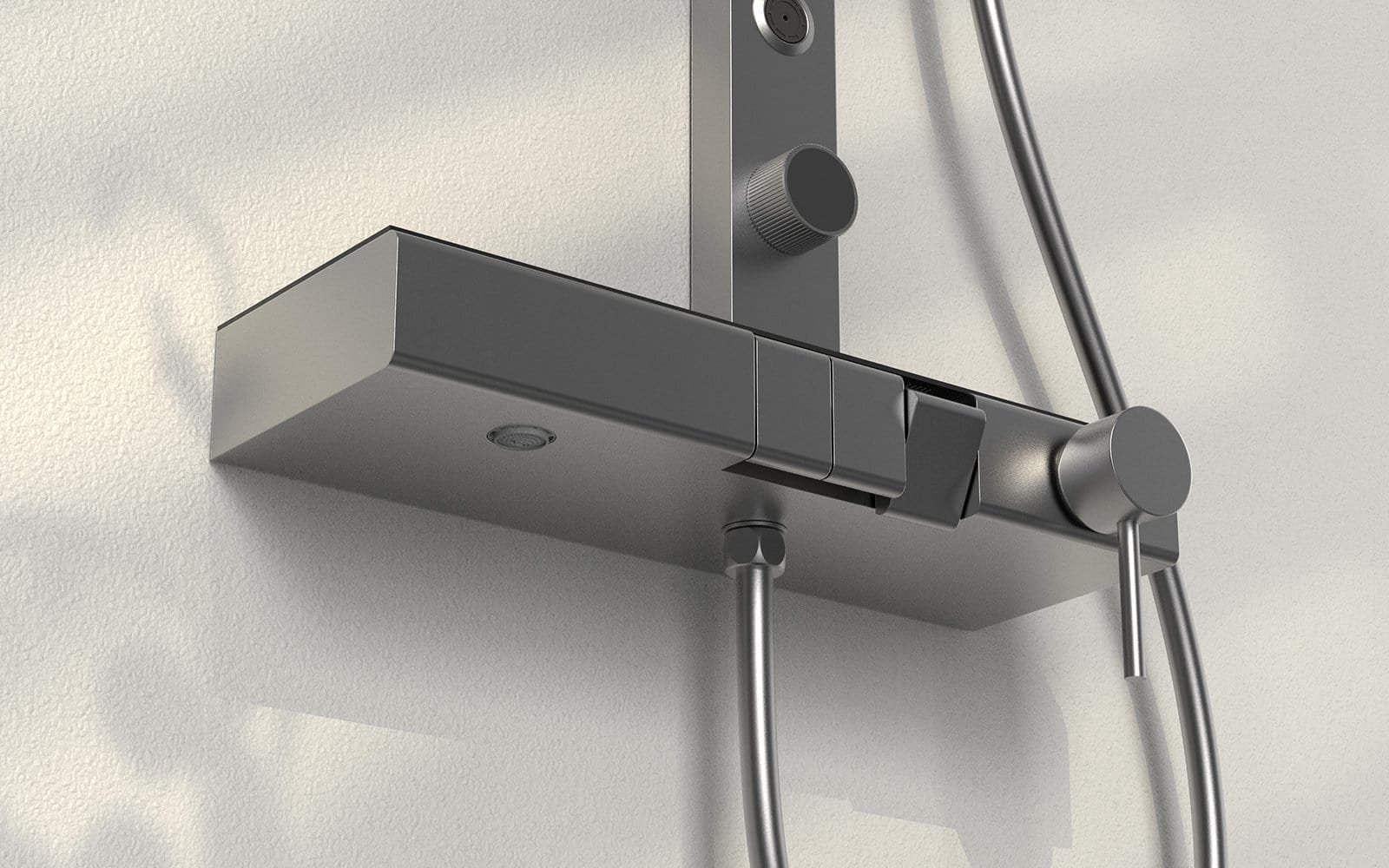
- Function: Controls serve as the user interface, allowing you to turn the water on/off, adjust flow intensity, set the temperature, or divert water to different outlets.
- Types:
-
- Handle: A single lever controls both flow and temperature, offering intuitive and streamlined operation.
- Knob: knobcan adjust the water flow and also the temperature., often paired with a diverter for tub-shower combos.
- Push Buttons: Commonly used to divert water between outlets (e.g., showerhead to handheld sprayer) or switch spray modes in digital or multi-function showers. In some thermostatic systems, buttons may also enable preset temperature settings.
- Materials: Typically metal (brass, stainless steel) or plastic, with finishes like chrome, brushed nickel, or matte black.
- Significance: Well-designed controls enhance user experience, ensuring precise temperature, flow, and water diversion adjustments.
- Maintenance Tip: Check for loose connections or worn washers behind handles or knobs to prevent leaks.
Cartridge/Valve
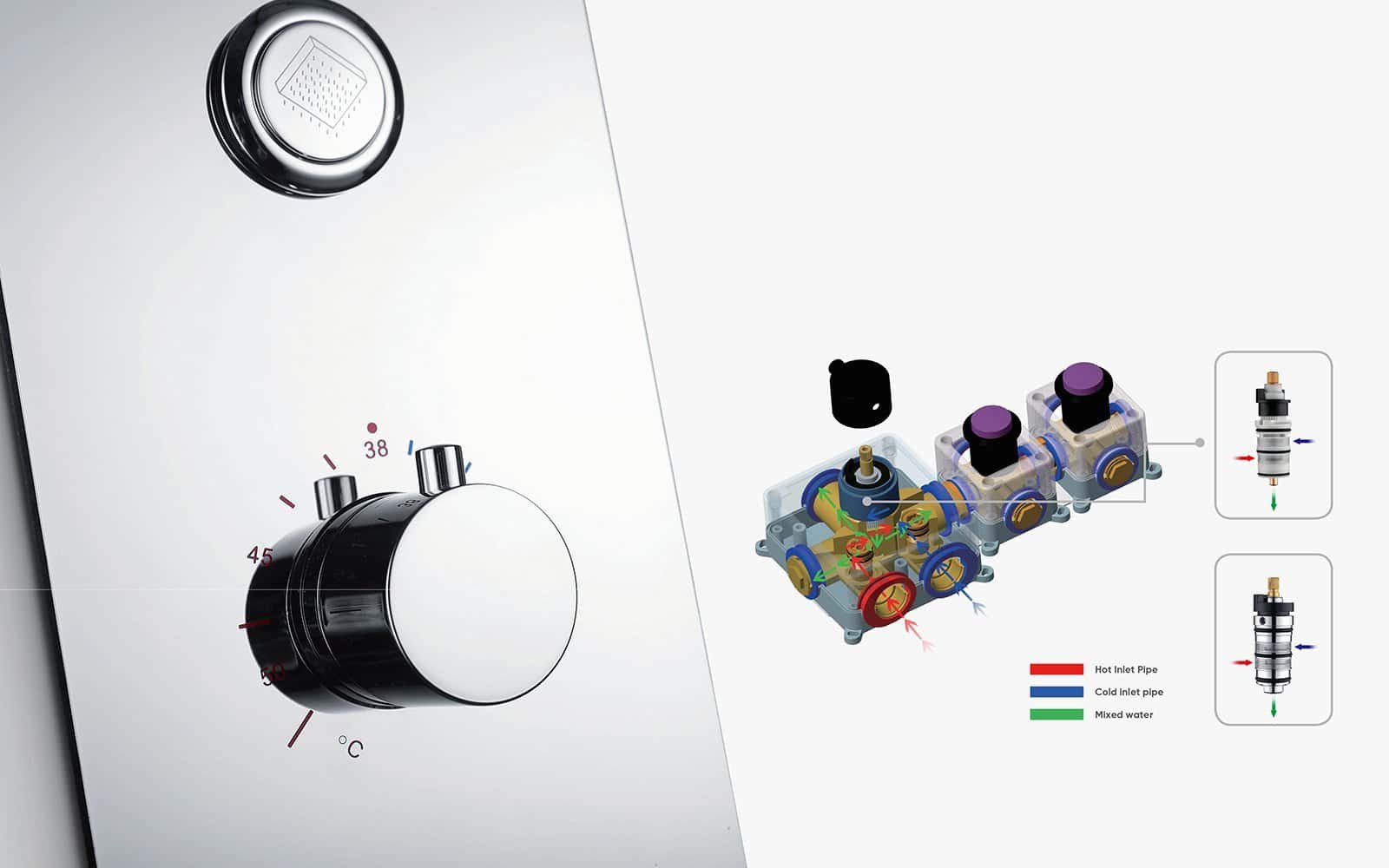
- Function: The cartridge or valve regulates the mixing of hot and cold water, controlling flow and temperature.
- Types:
-
- Ceramic Disc Cartridge: Durable, leak-resistant, and smooth, widely used in modern faucets.
- Ball Cartridge: Older design with a pivoting ball, less precise but reliable in some models.
- Compression Valve: Uses a washer to control flow, common in older faucets but prone to wear.
- Thermostatic Valve: Helps to maintain a set temperature, which is a popular feature for families.
- Pressure-Balance Valve: Adjusts flow to maintain consistent temperature during pressure changes (e.g., toilet flush).
- Significance: The cartridge is a key component for maintaining stable water pressure and temperature, which contributes to comfort.
- Further Reading: For an in-depth look at cartridge types and selection, see The Shower Cartridges Detailed Introduction.
Diverter
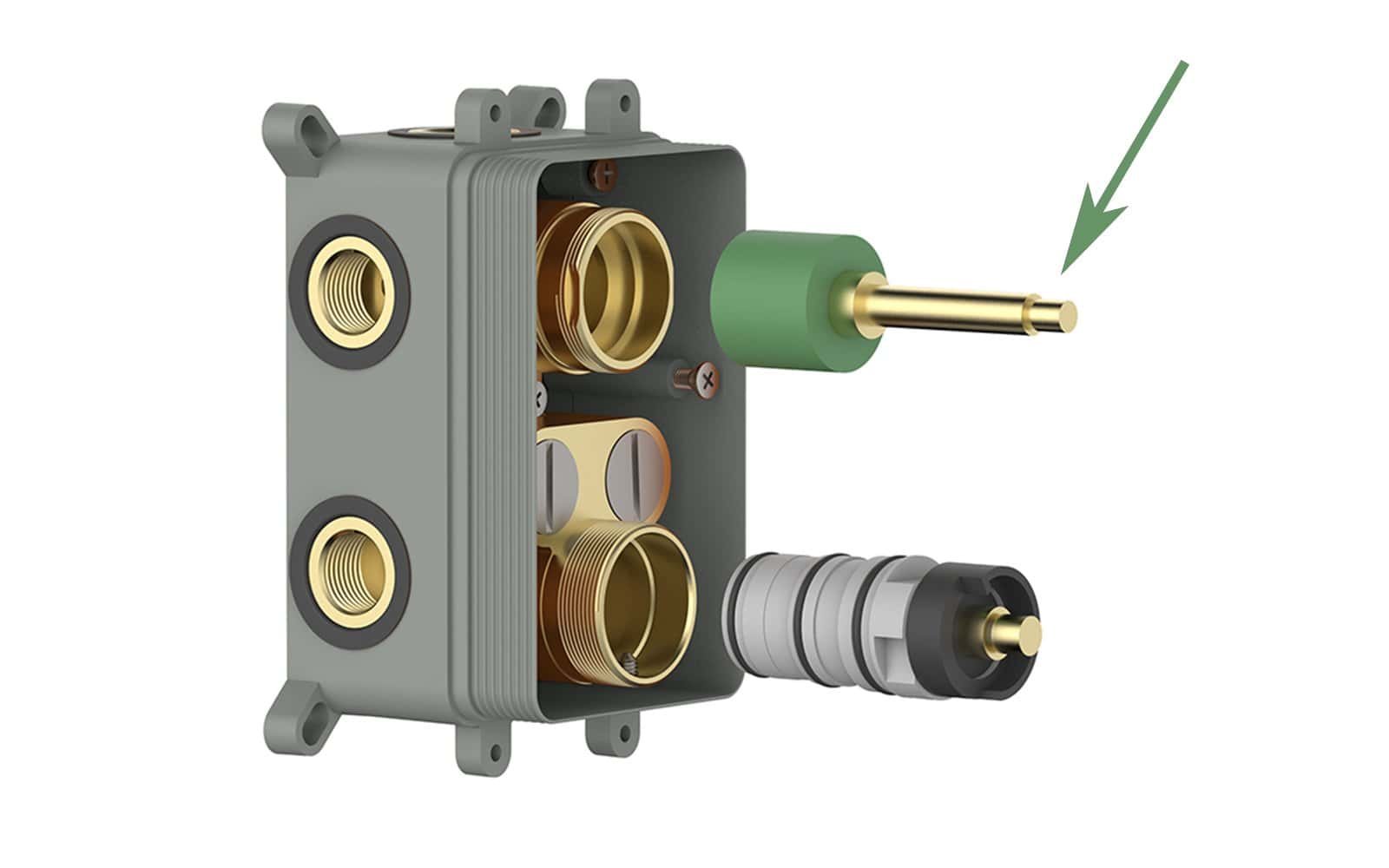
- Function: The diverter redirects water to different outlets, such as a showerhead, handheld sprayer, or tub spout.
- Types:
-
- Integrated Diverter: Built into the main handle or knob for seamless operation.
- Independent Lever/Button: A separate control, common in multi-function shower systems.
- Three-Way Diverter: Allows water to flow to multiple outlets simultaneously (e.g., showerhead and sprayer).
- Significance: Diverters add versatility, catering to diverse showering needs.
- Further Reading: Learn more about diverter types in the following post.
Flow Restrictor
- Function: A flow restrictor limits water flow, typically to 2.5 GPM (9.5 LPM) or less, to omply with water conservation standards.
- Design: A small plastic or metal device installed in the showerhead or shower arm.
- Significance: Can help reduce water consumption and environmental impact while maintaining a satisfactory shower experience.
Escutcheon Plate (Flange)

- Function: The escutcheon plate covers the wall opening around the faucet, providing a polished look and helping to create a seal against water intrusion into the wall.
- Materials: Metal (brass, stainless steel) or plastic, with finishes matching the faucet.
- Significance: Enhances bathroom aesthetics and ensures wall protection.
Showerhead

- Function: The showerhead is the primary water outlet, offering various spray patterns like rain, massage, or mist.
- Types:
-
- Fixed Showerhead: Mounted directly on the shower arm, non-adjustable.
- Handheld Showerhead: Connected via a hose for flexible positioning.
- Rain Showerhead: Large, overhead design for a gentle, immersive flow.
- Materials: Brass, stainless steel, or plastic, with finishes like chrome or nickel.
- Significance: The showerhead directly impacts the shower experience, from water pressure to spray comfort.
- Further Reading: Choose the perfect showerhead with the following post.
Shower Arm and Piping

- Function: The shower arm connects the showerhead to the faucet, allowing adjustable height or angle. Supply piping delivers hot and cold water from the main plumbing system.
- Materials:
-
- Shower Arm: Brass or stainless steel, corrosion-resistant.
- Supply Piping: Copper, PEX, or CPVC, compliant with plumbing codes.
- Significance: Ensures proper showerhead positioning and reliable water delivery.
Aerator
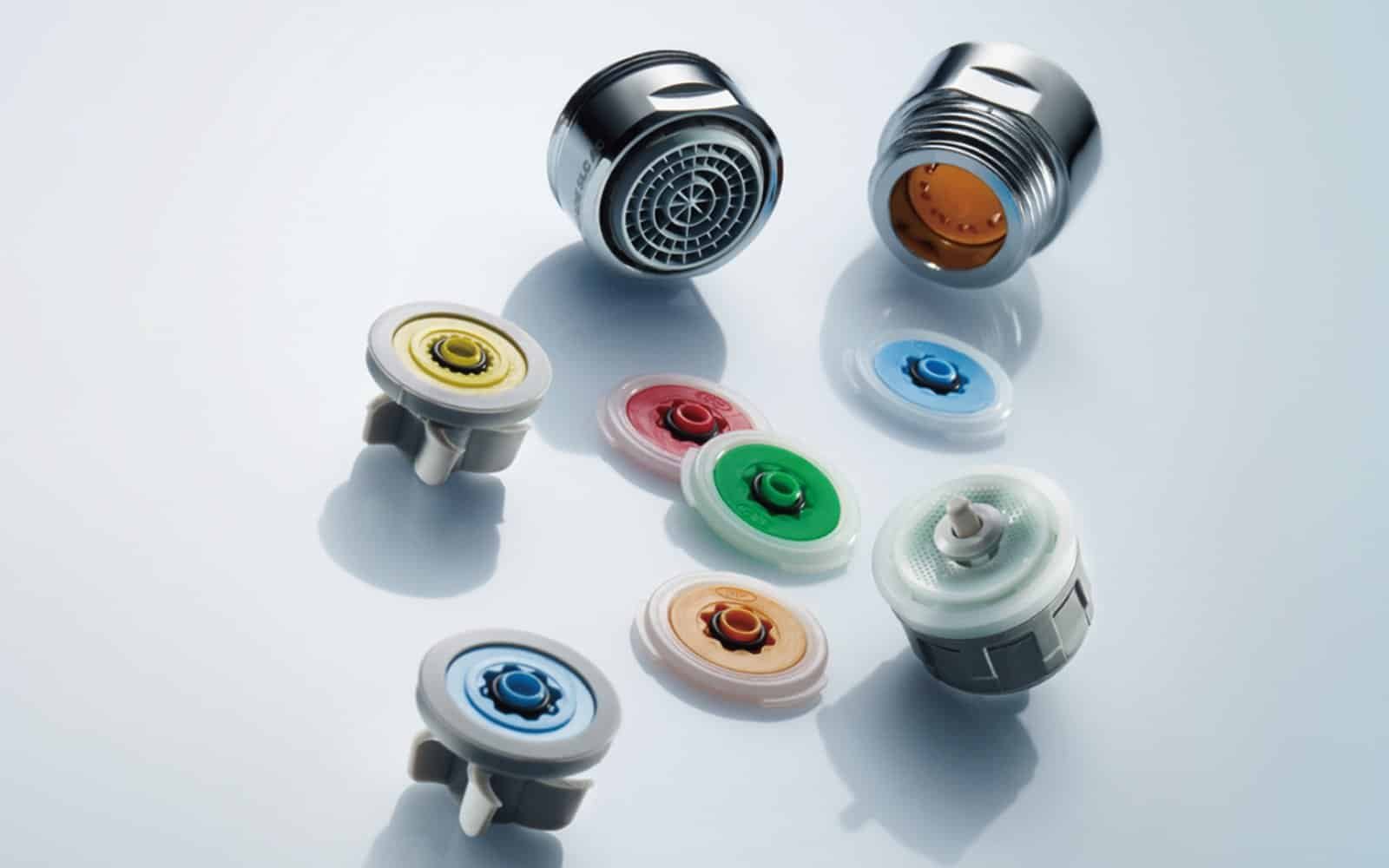
- Function: An aerator mixes air with water to create a softer, fuller flow while conserving water. Though more common in kitchen faucets, some showerheads include aerators.
- Significance: Enhances shower comfort and reduces water usage.
O-Rings and Washers
- Function: O-rings and washers are rubber or silicone seals that prevent leaks at connection points.
- Applications: Found around cartridges, showerhead connections, and piping joints.
- Significance: These are critical for creating watertight seals at connection points. Replacing worn seals is a common maintenance task.
- Source: Replacement O-rings can be found at most hardware or plumbing supply stores.
Mounting Hardware

- Function: Includes brackets, clips, and screws to secure the faucet and its components to the wall or plumbing.
- Significance: Ensures a stable, leak-free installation.
- Source: Mounting hardware is available at most hardware or plumbing supply stores.
Shower Hose
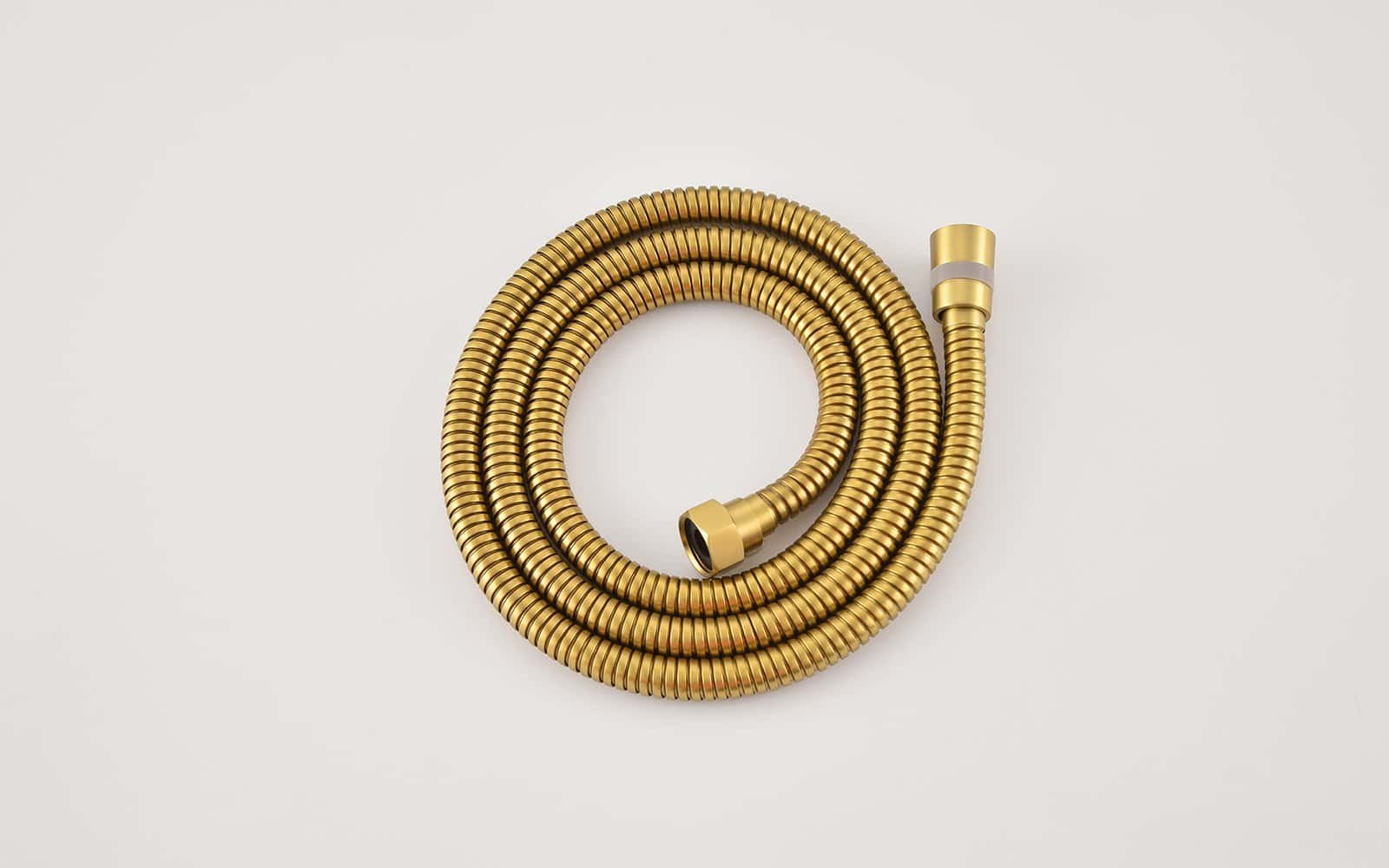
- Function: Connects a handheld showerhead to the faucet, offering flexible positioning.
- Materials: Stainless steel or reinforced plastic, designed to resist kinking.
- Significance: Enhances shower versatility, ideal for cleaning or targeted rinsing.
Why Understanding Shower Faucet Components Matters
Understanding shower faucet components is valuable for homeowners, DIYers, and professionals. Here’s why:
- Effective Maintenance and Repairs: Knowing parts like O-rings, washers, and cartridges helps you identify and fix common issues like leaks or drips. For example, a worn O-ring can cause a dripping faucet.
- Informed Repairs: With basic knowledge, you may be able to handle small maintenance tasks yourself, like cleaning an aerator or tightening a handle.
- Customized Upgrades: Knowing how diverters, valves, and showerheads work helps you upgrade your system—for instance, adding a handheld sprayer or a thermostatic valve for better comfort and control.
- Water and Energy Conservation: Understanding components like flow restrictors and aerators can help you choose models designed for water efficiency.
- Understanding Temperature Control: Learning about thermostatic and pressure-balance valves can help you understand how different systems manage temperature fluctuations.
- Informed Purchasing: Understanding component materials (like ceramic vs. compression) can help you make more informed purchasing decisions.
- Better Design Choices: Parts like escutcheon plates and showerheads affect bathroom style. Understanding finishes and designs helps you pick options that match your space.
- Faster Troubleshooting: If problems like low pressure or diverter failure occur, knowing the components helps you find and fix the issue quickly.
In short, understanding shower faucet components can empower you to make more informed decisions about your bathroom.
Conclusion
By understanding the components of a shower faucet, you gain insight into the engineering behind this everyday essential, empowering you to make informed decisions for installation, maintenance, or upgrades. Whether you’re a DIY enthusiast or a homeowner looking to enhance your bathroom, this guide provides the knowledge to create an efficient, comfortable shower experience.
FAQs
Related Posts





